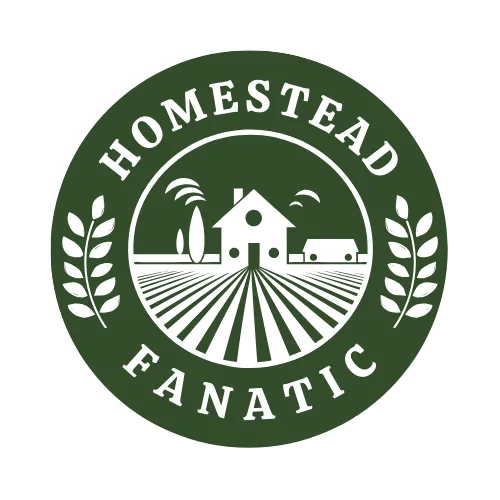
HOMESTEAD FANATIC BLOG
Discover amazing destinations, plan your perfect trip, and book unforgettable experiences. Our travel website makes traveling around the world easy, enjoyable, and hassle-free.
EXPLORE GREAT PLACES
THE HOMESTEAD BLOG

How to Build a 6-Month Emergency Food Supply
In uncertain times, having a solid emergency food supply provides security and peace of mind. A 6-month emergency food supply ensures you and your family are prepared for unexpected events, from natural disasters to economic hardships. This guide will walk you through the essential steps to build a comprehensive and sustainable emergency food supply.
Step 1: Set Clear Goals
Before you start stocking up, define your food storage goals. Consider factors such as:
Family size and dietary restrictions
Caloric needs per person
Space availability for storage
Budget constraints
Understanding these factors will help you build a supply that meets your unique needs and prevents overspending or under-preparation.
Step 2: Calculate Your Food Requirements
A general rule of thumb is to aim for 2,000 calories per person per day. For a family of four, that equates to about 240,000 calories per month or 1.44 million calories for six months. Use online food storage calculators to get a more precise estimate.
Don’t forget to factor in the energy required for activities during an emergency. Physical tasks like collecting water or maintaining shelter may increase daily caloric needs.
Step 3: Choose the Right Foods
When selecting foods, prioritize items that are nutritious, shelf-stable, and easy to prepare. Key categories include:
Grains and Staples: Rice, pasta, oats, flour, and quinoa provide long-lasting energy.
Proteins: Canned meats, beans, lentils, and peanut butter are protein-rich essentials.
Fruits and Vegetables: Dehydrated or freeze-dried produce retains nutrients while offering a long shelf life.
Dairy and Alternatives: Powdered milk, shelf-stable cheese, and plant-based milk options ensure calcium intake.
Fats and Oils: Cooking oils, ghee, and nut butters supply essential fats.
Snacks and Comfort Foods: Include comfort foods like chocolate, coffee, and energy bars to boost morale.
Water and Beverages: Store at least one gallon of water per person per day, plus drink mixes or electrolyte powders.
Additionally, include essential cooking ingredients like salt, sugar, baking powder, and spices to enhance flavor and make meals more enjoyable.
Step 4: Storage Solutions
Proper storage is crucial to maintaining food quality. Follow these best practices:
Use Mylar bags with oxygen absorbers for grains and legumes.
Store food in airtight containers to protect against moisture and pests.
Keep storage areas cool, dark, and dry to prolong shelf life.
Rotate stock regularly using the "first in, first out" method.
Invest in sturdy shelves to prevent collapses and label containers with expiration dates for easy organization.
Step 5: Meal Planning
Create meal plans that utilize your stored ingredients. Aim for variety to prevent food fatigue and ensure balanced nutrition. Consider easy-to-make meals that require minimal cooking, such as soups, stews, and casseroles.
Write down recipes and keep them in your food storage area. During a crisis, simple, familiar meals can bring comfort and structure to challenging times.
Step 6: Supplement with Garden Produce and Preserving
For those with garden space, growing fresh produce can supplement stored food. Learn preservation techniques such as canning, dehydrating, and fermenting to extend your harvest.
Having seeds on hand for sprouting is another excellent way to add fresh greens to your diet. Sprouts grow quickly, require minimal space, and are packed with nutrients.
Step 7: Test Your Supply
Before an emergency occurs, test your supply by cooking meals with stored ingredients. This practice helps you become familiar with preparation methods and identify any missing items.
Additionally, conduct regular inventory checks to ensure no food has spoiled and to rotate stock as needed.
Step 8: Emergency Cooking and Equipment
In emergency situations, traditional cooking methods may not be available. Equip yourself with alternative cooking methods, such as:
Propane stoves or camp stoves
Solar ovens
Rocket stoves
Fire pits with grilling grates
Stockpile matches, lighters, and fire starters, and ensure proper ventilation when cooking indoors with alternative heat sources.
Step 9: Water Purification
Water is just as crucial as food. In addition to storing bottled water, have purification methods on hand, such as:
Water purification tablets
Portable water filters
Boiling methods
Having multiple water purification options ensures access to safe drinking water even if your primary supply runs low.
Step 10: Building Community and Sharing Knowledge
Emergency preparedness becomes even more effective when you build a network. Connect with local prepper groups or online communities to share knowledge, trade supplies, and support one another.
Organize preparedness workshops with friends and neighbors to build a sense of community and ensure everyone is better equipped for emergencies.
Conclusion
Building a 6-month emergency food supply takes planning and dedication, but the peace of mind it provides is priceless. By carefully selecting foods, organizing storage, and rotating stock, you'll ensure that your family stays nourished in times of crisis. Start small, stay consistent, and soon you'll have a robust food reserve ready for any situation.
Preparedness is a journey, not a destination. Each step you take now builds a foundation of resilience and security for the future. With a thoughtful approach and steady progress, you’ll be ready for whatever challenges lie ahead.

POPULAR QUESTIONS
Asked Questions ?
Many people interested in homesteading ask about how to get started, what animals and crops are best for beginners, and ways to generate income from their land. Food preservation techniques are also a common topic, as self-sufficiency plays a key role in homesteading success. These FAQs provide a helpful starting point for anyone looking to embrace a more independent and sustainable lifestyle.
What is homesteading?
Homesteading is a lifestyle focused on self-sufficiency, which often includes growing your own food, raising livestock, preserving food, and using sustainable practices to reduce reliance on modern systems.
How do I start homesteading with little or no land?
Even if you don’t have a large property, you can start small by container gardening, keeping backyard chickens (if permitted), composting, and learning essential skills like food preservation and DIY projects.
What animals are best for a beginner homesteader?
Chickens, rabbits, and ducks are great starter livestock. They require less space, are relatively easy to care for, and provide eggs or meat while helping with pest control.
How can I make money from homesteading?
Many homesteaders generate income by selling eggs, honey, homemade goods, fresh produce, handmade crafts, or even offering homestead-related workshops.
What are the best crops for beginner homesteaders?
Easy-to-grow crops include tomatoes, zucchini, lettuce, radishes, and herbs like basil and mint. These require minimal maintenance and provide a great starting point for new homesteaders.
How do I preserve food for long-term storage?
Canning, dehydrating, freezing, and fermenting are all effective ways to preserve food. Each method has its benefits, depending on the type of food and your available storage space.

Your Gateway to Global Adventures Await Here.
Quick Links
Home
About Us
Services
Blog
Quick Links
Email:
